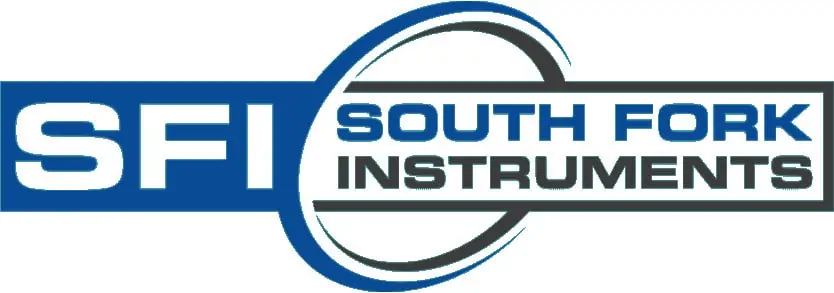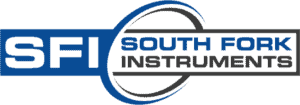Almost every market sector struggles to control foam in industrial processes. Yet, it’s a challenge that industries such as pharma, brewing, paint manufacturing, wastewater treatment, oil and gas, and food processing have a lot to gain from overcoming.
Unless properly monitored and controlled, foaming issues in industrial-scale bioreactors, for instance, can have disastrous consequences. At the same time, inadequate foam control can bring several negatives like increased costs and reduced performance. Finding the right foam control systems is, in other words, crucial to optimize operations.
A biotech company looks for automated foam control systems
Take the example of a biotech company that came to us for help. The company was using visual inspection and manual injection of antifoam chemicals into bioreactor vessels to control foam growth. Not only was the manual method labor intensive, it also resulted in inconsistent foam dosing volumes, depending on which operator was performing the task. That inconsistency, in turn, meant the experimental data from each batch did not reliably reflect what was actually happening. The company needed a new automated foam control system.
In this post, we’ll take a closer look at the issues surrounding foam control in industrial processes as well as the introduction of IMA (Intelligent Multi-Action) Sensing by Hycontrol, a major turning point in the ability of foam sensing systems to provide reliable measurement for foam control strategies. The impact can be significant — some users have told us the ability to always get an exact reading has enabled them to cut anti-foam agent addition by as much as 75%.
Guesswork increases the risk of ineffective foam control
In general, foam is an unstable, two-phase medium of gas and liquid: gas pockets trapped in a network of thin liquid films. A wide range of chemicals can be used to prevent foam forming, to disperse it once formed, or both. When added to a process, these chemicals are absorbed into bubble surfaces where they effectively bring about a tension change that causes the bubble to collapse. An effective defoamer can disperse foam in a few seconds.
Some process foams are highly stable and long lasting, others constantly collapse and resurge. Typically, an individual operator will make a visual observation of foam generation and add chemicals accordingly. But the method comes with distinct drawbacks:
- Variety of assessments: Different individuals can have different opinions as to the severity of the foam layer and, therefore, the right amount of chemical to add.
- Inconsistent chemical additions: When the volume of chemical addition varies, it can impact operating cost and process performance/yield.
- Monitoring gaps: Foam generation can be rapid and sometimes unexpected and unless an operator is present to see the foam build up, it can quickly get out of control.
- Increased risk of lost batches and damaged equipment: Uncontrolled foam generation can cause significant problems. If foam is allowed to enter fermenter overheads, it can foul or block pipes, vents, and filters, leading to overpressure conditions within the fermenter vessel. Unless action is taken immediately, this condition can result in a lost batch and potential damage to plant equipment — a large cost concern. As a result, it is common practice to overdose with costly defoamer chemicals. But that comes with another drawback as antifoam chemicals may negatively affect batch yields.
The challenges of obtaining reliable measurements
The key to successful foam control is the ability to understand foam characteristics and to monitor its depth or thickness. In the past, effective and reliable measurement of foam layer presence and density has been challenging. A number of factors — such as varying foam density and the coating or fouling of measurement elements with residual product — have contributed to the complexity. (It’s important to recognize that foam layers are typically only about 1% liquid in composition — which means they are 99% gas!)
A variety of techniques have been tried to varying degrees of success:
- Radar-type level systems mounted in the top of a vessel can be tuned to see the topmost layer of a process, but can be fooled if any foam layer becomes lighter or if the process liquid becomes more “reflective.”
- Microwave level sensors will more likely than not acquire the level of the liquid below any foam layer.
- Admittance or capacitance technology probes can be quite successful in detecting the presence of foam as point level devices but most will be disabled if they become coated with process material, giving continuous false positive indication.
Why many foam control strategies fail
In any case, once foam is detected by a point-level system and depending upon the height it is set above the process, it can be too late to prevent a “foam-out” situation where vessel overheads are filled with process material, causing blockage of filters and build-up/contamination in vent lines.
This is particularly true for bioreactor operations where liquid levels can vary throughout the course of a batch, necessitating the positioning of the sensing point above the highest liquid level the batch will reach.
Many of the techniques that have aimed to improve or replace visual/manual monitoring of foam levels have fallen short of providing adequate and sustainable solutions to foam control. The main issues have been:
- process fouling rendering the detection method non-operable until cleaning can be implemented;
- the frequent lack of vessel entries to install multiple probes at different levels; and
- the inability to distinguish between liquid level and foam layer.
New foam detection probes overcome common issues
The introduction of IMA (Intelligent Multi-Action) Sensing by Hycontrol eliminates previous issues for the reliable measurement of foam control strategies. Foam detection probes with IMA sensing capability have an additional “guard” sensor that is used to detect and nullify coating/fouling of the probe by process material, eliminating false positive detection and therefore preventing the overdosing of the process with defoaming agent.
Probes with multiple sensing points
For fixed liquid level fermentation, single-point probes are available from Hycontrol under the SureSense brand. Hycontrol expanded the technology for variable level processing to include probes with multiple (up to three) sensing points or sensors along their length. Each sensor works independently to provide accurate indication of no foam, foam or liquid presence.
Automatic foam addition
For control purposes, simultaneous monitoring of these sensors allows the automatic addition of defoamer when the presence of foam is detected, and discontinuation of defoamer addition should the sensor detect liquid level. Strategies to control foam are:
a) Dose on foam — continuous dosing when foam is detected. This is ideal for fermentations where foam generation is rapid and unexpected
b) Shot and delay — cyclical dosing punctuated by wait periods to allow it to take effect. Used for applications where foam is slower to generate and perhaps more predictable. Shot and delay times are tuned to suit the fermentation depending upon foam characteristics. A shot and delay strategy minimizes the amount of defoamer used and provides the best possible yield at the lowest defoamer agent cost.
Hycontrol foam sensor made difference for biotech company
For the aforementioned biotech company, the installation of the Hycontrol SureSense+ system proved to be effective and reliable in detecting foam generation in their bioreactors. In conjunction with the bioreactor control system, the implementation of automated antifoam dosing led to greater control of foam levels as well as reduced surveillance time by operators, eventually leading to reliable unattended operation through the night and weekends.
SureSense systems are specifically designed for measuring the presence of foam in fermentation. Unlike other detection methods, SureSense is not a modified or repurposed liquid level sensor design. Reliable foam detection leads to a real reduction in cost and in many cases, increased yield/production efficiency.
Final word on foam control systems
Reliable real-time monitoring and measurement of foam production ensures controlled quantities of defoamer chemicals are only added when required, provides for repeatable production process and stops unexpected and expensive foam out events from happening.
Do you have questions for us about foam control systems? Contact us today.

